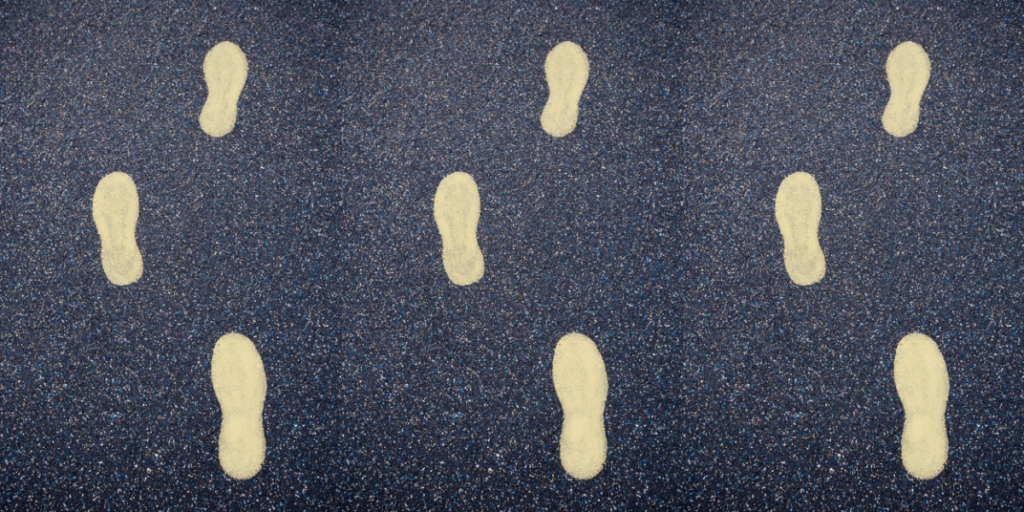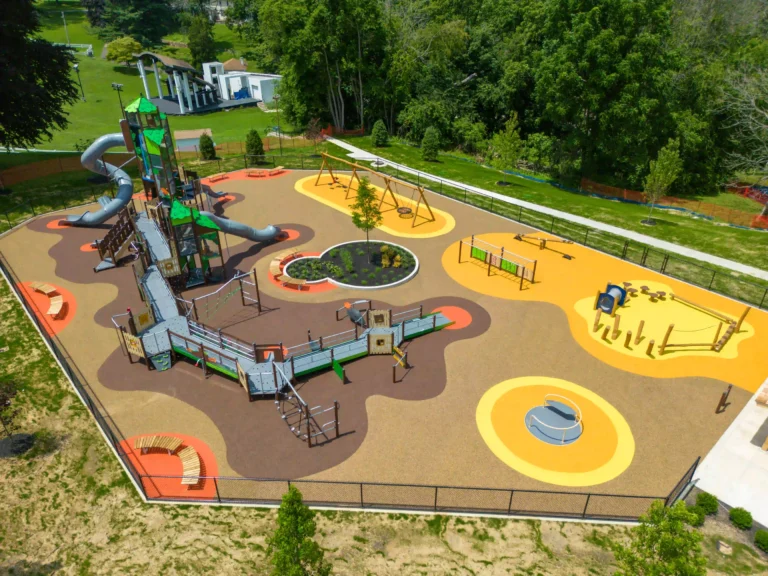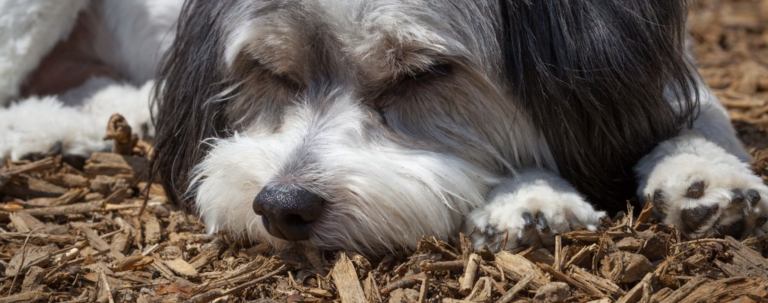Playground surfaces must prioritize safety as there is a higher risk of slips, trips, and falls. And for this reason, construction firms often choose poured-in-place rubber surfaces.
This post explores what poured-in-place rubber playground surfaces are, their benefits, and how they compare to rubber mulch.
What are poured-in-place rubber playground surfaces?
Poured-in-place rubber playground surfaces are resilient groundwork installed on-site by mixing rubber granules with a binder and pouring them over a prepared base. Workers then trowel the surface to create a smooth, gap-free finish.
Poured-in-place surfaces offer various advantages over other solutions. Contractors can customize their color and design to meet clients’ needs for outdoor applications.

Advantages of poured-in-place rubber for playgrounds
Poured-in-place rubber for playgrounds offers substantial benefits:
Safety
According to ASTM standards, poured-in-place rubber can cushion falls from up to 10 feet. It also prevents injuries from splinters, tripping hazards, or animal waste that may be present in loose-fill materials like wood chips or sand. Pouring the surface creates a seamless barrier between the ground and material from the outside, reducing injury risk and making it easy to clean.
Durability (long-lasting)
Despite their rubber construction, poured-in-place playground surfaces are also highly durable. Poured-in-place rubber can withstand harsh weather conditions like rain, snow, heat, or cold. The non-slip surface also drains well and does not create mud or puddles. Water filters off into surrounding lower-lying terrain, reducing the risk of organic damage or freeze-thaw weathering.
Environmentally friendly
Being made of recycled materials, poured-in-place rubber playground surfaces also offer environmental benefits. It is an excellent way to make use of waste.
Cost
Poured-in-place rubber playground surfaces are cost-effective and low maintenance. Solutions are cheaper than other rubberized surfaces because they use inexpensive materials. They also require little to no maintenance, as the material cannot shift, erode, or decompose over time. Most surfaces can last upwards of fifteen years with minimal care.
Installation
Installation of poured-in-place playground surfaces is also relatively straightforward. The first step is to prepare the base for the poured-in-place rubber. Contractors must compact and level it, and then grade it to ensure adequate drainage.
The second step is to mix the bottom layer of rubber granules with a binder. Most contractors use a polyurethane resin that glues all the material together and hardens when cured.
The third step is to pour and trowel the bottom layer of rubber granules over the base to make it smooth, using a hose or wheelbarrow. After that, contractors mix colored rubber granules for the top layer, pour and trowel it to create an even, seamless finish.
Rubber playground surface installation only takes two or three days to complete. Once finished, clients only need to wait 24 hours before using it.
Poured-in-Place Rubber vs. Rubber Mulch for Playgrounds
Rubber mulch is usually made of shredded pieces of recycled rubber and is an alternative to conventional poured-in-place playground surfaces.
Some of the advantages of rubber mulch are:
- It can be cheaper than poured-in-place rubber, costing around $3 to $6 per square foot installed (compared to more than $10)
- It does not require a professional installation and can spread over any existing surface.
- It is resistant to weather, UV, mold, and insects.
However, it comes with some disadvantages. These include:
- It is less shock absorbent than poured-in-place rubber, meaning you must lay it thicker to get the same energy-absorbing properties.
- It is not a seamless surface, meaning that it can scatter or lose thickness over time, creating an uneven and potentially dangerous surface.
- It is harder to clean and maintain, as insects, droppings, and dirt can easily infiltrate it and become mixed inside.
Which you choose depends on factors such as budget, safety, aesthetics, and maintenance. Both options provide a soft and cushioned surface for children to play on. However, poured-in-place may be superior for clients looking to maximize safety and reduce ongoing maintenance.
FAQs
Is poured-in-place rubber permeable?
Yes. Poured-in-place solutions contain tiny holes, allowing water to travel to drainage channels beneath. This porous feature is great for preventing puddles from forming in wet weather. Learn more here as it saves the environment as well
Does poured-in-place rubber get hot?
Poured-in-place rubber can get hot in the summer during direct sunlight. In some cases, the temperature can rise to the point where it can cause discomfort to bare skin.
How thick is pour-in-place rubber?
The thickness of pour-in-place rubber depends on the anticipated fall height. Typically, the thickness range is 1-3/4″ to 5-1/2″ for the base layer and 3/8″ to 1/2″ for the wear layer. Thicker wear layers can yield a more durable surface, but too much thickness can adversely affect its properties.
Final Thoughts
In conclusion, playground surfaces must prioritize safety due to the risk of slips, trips, and falls. Poured-in-place rubber playground surfaces are a resilient solution that is installed on-site by mixing rubber granules with a binder and pouring them over a prepared base. This creates a seamless barrier between the ground and material, reducing injury risk and making it easy to clean. In addition to providing safety benefits, poured-in-place rubber playground surfaces are also highly durable, environmentally friendly, cost-effective, and low maintenance.
Compared to rubber mulch, poured-in-place rubber may be superior for clients looking to maximize safety and reduce ongoing maintenance. Rubber mulch may be cheaper and resistant to weather, UV, mold, and insects. However, it is less shock-absorbent than poured-in-place rubber, meaning it must be laid thicker to achieve the same energy-absorbing properties. Rubber mulch is also not a seamless surface, meaning it can scatter or lose thickness over time, creating an uneven and potentially dangerous surface.
It is important to note that poured-in-place rubber playground surfaces are permeable and may get hot in direct sunlight. The thickness of poured-in-place rubber depends on the anticipated fall height. Clients should choose the solution that best meets their budget, safety, aesthetics, and maintenance needs.
Overall, poured-in-place rubber playground surfaces are an excellent choice for clients seeking a safe, durable, environmentally friendly, cost-effective, and low-maintenance solution for their playgrounds. Contact Custom Park Today if you are interested in installing Poured-in-Place Rubber for your Playground Surfaces


